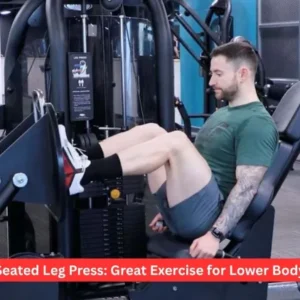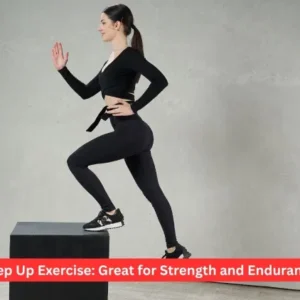Six pack abs workout should not be based on some crunches and isolated exercises only, but it should be patterned and systematically staged. This is a holistic guide that will teach you what you need to achieve a defined six pack, involving muscle development, depletion of fat, strengthening of the core muscles with the help of exercises, and positive lifestyle habits.
You will find out how the rectus abdominis functions, what the importance of body fat decimalisation is to abdominal exposure, and how the upper and lower abs and the obliques should be trained. We will also discuss some of the tactics to improve performance, weekly training program, diet recommendations, pitfalls to avoid, progress monitoring and how realistic it will be to reach and sustain your core objectives.

Understanding Six Pack Abs
The rectus abdominis is a long vertical muscle that stretches down your abdomen, and that is why it is called the six-pack. It has a fibrous tissue called tendinous intersections that divide it into six packs. It is a muscle everyone has, just that it will only be seen when body fat is at a low rate.
The two most important parts of visible abs are:
- Muscle Building – Development and increasing the strength of the abdominal muscles with six-pack abdominal exercises using force.
- Body Fat Percentage – to decrease the percentage of body fat using a combination of cardio, strength training and a proper diet.
Even on those with very low body fat, the much-needed muscle definition can only come with a good six pack abs workout routine. In another scenario, ab exercises can be adopted without making dietary changes; this will also not produce noticeable results.
Essential Tips Before You Start
There are a lot of things to take note of before engaging in a six pack abs workout:
- Frequency Makes the Difference: Results will not be instant. Your goal should be to train your abs 3-4 times a week.
- Progressive Overload Counts: The abs, as is the case with all muscle groups, require progressive resistance. Begin with bodyweight, go to weights.
- A significant Diet Role: No matter how many crunches you perform, a bad diet will cover your stomach with fat.
- Water and Sleep: Water helps to lose weight, and sleeping more than 7 hours contributes to recovery.
Forgetting these basics may retard or even halt your process of acquiring six pack abs workout.

Effective Six Pack Abs Workout Routine
In this six pack abs workout, you are exercising every part of your core- upper abs, lower abs and obliques. Be sure to do this workout 3 to 4 times a week. You may also add it at a time of end of your full-body or cardio training.
1. Crunches
- Target Area: Upper abs
- How to Do: Start by lying down on your back; bend the knees and rest the feet flat on the floor. Put your hands behind your head and do not strain your neck. Tighten the abs and raise the shoulders. At each point, pause the top and release slowly at the bottom.
- Reps: 3/15-20
The crunches are part and parcel of any six pack abs workout. They also directly stimulate the upper part of the rectus abdominis and contribute to the process of forming the first muscle definition.
2. Leg Raises
- Target Area: Lower abs
- How To: Lying flat on your back, position your hands below the hips. Stretch out your legs and lift them gradually so that they are vertical. Gradually lower them so as not to touch the floor.
- Reps: 12-15(3 sets)
Leg raises are a crucial part of a six pack abs workout as lower ab fibre is usually the notoriously difficult to train/develop one.
3. Russian Twists
- Target Area: Obliques
- How to Do: Sit on the floor, bend your body back a bit, and raise your feet off the ground. Put a weight in your hand. Turn your body to the left, and then turn to the right.
- Reps: 3 sets of 20 (10 one leg at a time)
Russian twists are one of the main exercises for your six pack abs workout in that they enhance side definition and also help to tighten your waistline
4. Plank
- Target Area: Entire core
- How to Do: Start on hands and feet, then press yourself into forearms and toe tips. Conduct your spine, hips over one another, and tummy tight.
- Time to hold: 30-60 sec 3 times
Planks are a core strength-building exercise that is static. Planks have to form part of any six pack abs workout because they are the only ones that work the whole of the core and not just the rectus abdominis.
5. Bicycle Crunches
- Target Area: Upper abs and obliques
- How to: Lie on your back and raise your knees. Alternately cycling your knees with the opposite elbow to them.
- Reps: 3 sets of 20( 10 each side)
Bicycle crunches are a combination of twisting and crunching; thus, they are considered to be one of the best exercises in any six-pack ab exercise series.
6. Mountain Climbers
- Target Area: Lower abs and cardio
- How To: Place yourself in a plank position and do a knee to chest as fast but as controlled as you can, alternating legs. The core must also be kept tight.
- Time: 30 to 45 second interval, 3 repetitions
This movement is a heart-raising exercise that is also targeting your core, so that this can be an effective as well as total movement for yourself, obtaining a pack abs workout.
7. Hanging Leg Raises (Advanced)
- Target Area: Lower abs
- How to Do: Hold the arms straight and hang on a pull-up bar. Straighten your legs and raise them parallel to the floor.
- Reps: 10-12, sets (3 sets total)
Hanging leg raises are a very advanced and six pack abs workout because the exercises develop a lot of power in the lower abs, and the exercises require a lot of core stability.

Weekly Workout Plan
A six pack abs workout alone is not enough. You need a weekly plan that balances cardio, strength, and recovery:
| Day | Abs Workout Included? | Additional Training |
| Monday | Yes | Full-body strength |
| Tuesday | No | Low-impact cardio |
| Wednesday | Yes | HIIT or circuits |
| Thursday | No | Weight training |
| Friday | Yes | Core & upper body |
| Saturday | Optional | Light cardio or yoga |
| Sunday | Rest | – |
Sticking to this order will make your six pack abs work out efficiently without overworking your core muscles.
Nutrition Tips for Six Pack Abs
Nor will any six pack abs workout program show results when your diet is out of whack. Pay as much attention to nutrition as to training:
- Calorie Deficit: Burn more than you take in to lose fat and get your abs out.
- Protein-Rich Meals: Chicken, fish, eggs, beans, and legumes help to build and repair muscles.
- Good Fats: Avocados, nuts, oils (olive oil) balance hormones/fat metabolism.
- Avoid Sugar and Refined Foods: These also cause storage of fat along the waistline.
- Hydration: Water promotes digestion and absorption and helps in eliminating bloating.
Proper nutrition will make your six pack abs workout worthwhile and will not make you spin your wheels in the gym.

Common Mistakes to Avoid
Do not make these errors if you want your six pack abs workout to bring actual results:
- Doing Abs Daily: You need to give your abs a rest. Fatigue and plateaus come as a result of overtraining.
- Not Doing Any Other Ab Exercises: You have to mix it up—work lower abs, obliques, and deeper core muscles as well.
- Avoidance of Compound Exercises: Squats, deadlifts and overhead lifting work your core as well as building full body strength.
- Ignoring Cardio and Diet: You will not see a six pack when your body fat is higher.
- Poor Form: Quality rather than quantity. On a controlled motion, keep good posture.
A six pack abs workout must be a component of a wider fitness plan (cardio, strength, mobility and rest).
Tracking Progress: When Will You See Results?
Depending on your starting level, you will have to wait a certain time to obtain the results of your six pack abs workout:
- For Beginners: You will see visible results within 8-12 weeks when having a constant diet.
- Intermediate: In case you are already in order, the results can be observed in 4-8 weeks.
- Advanced: In case you are lean, then a dedicated six-pack abs routine can deliver a sharper definition in 2-4 weeks.
Keep a log of your progression with pictures, waist measurements or body fat percentage. Don’t get too hung up on the scale.

Final Thoughts
The six pack is not about being perfect; a six pack is about consistency, doing smart training, and eating clean. A strong core not only helps you to look good, but also helps you to be strong, mobile and a better athlete.
Through a balanced six pack abs workout, proper food intake and a balanced weekly program, any person will be able to get a chiselled abdomen. Remain focused, believe in the system and keep in mind that results are second to the journey that one undertakes.
Frequently Asked Questions
1. And do I have to do a six pack abs workout regularly to achieve the effect?
Ideally, you are supposed to do a six-pack abs workout 3 to 4 times a week. This provides sufficient frequency that will cause muscle hypertrophy in your abdominals and allow recovery of your core. Adding ab exercises to the overall body training and cardiovascular activities will help to increase the tempo of fat burning and shaping up.
2. Is it possible to have six-pack abs without doing mainly ab exercises?
No, it does not suffice to do ab exercises. Although they contribute to the development of the muscles of the abdomen, the sight of a six-pack also requires low levels of body fat, which is achieved by following a clean diet and doing cardio. A complete six-pack abs program must have strength-building exercises, fat-burning exercises and proper diet.
3. What are the foods to eat for a six-pack abs exercise?
In order to complement your six-pack abs exercise, pay attention to a high-protein, energy-restricted menu. Eat lean protein (chicken, eggs, fish) and healthy fats (nuts, olive oil, avocado), and eat a washboard abs worthy carb (oats, quinoa, vegetables). It is best to avoid sugars, processed food, and too many refined carbs, and have enough fluids.
4. What is the time frame it takes to show 6-pack abs?
The schedule will be based on how fit you are and what percentage of body fat you have. Newbies can expect to have results after 8-12 weeks, intermediate individuals after 4-8 weeks, and advanced people after 2-4 weeks, assuming that there will be consistency in exercises, nutrition, and rest. Our bodies are all different, and we need to be patient and committed.







